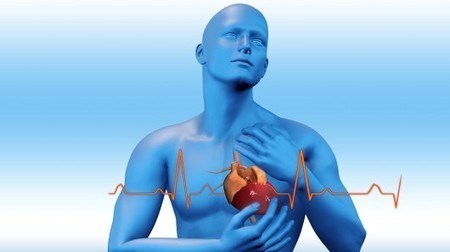Two recent studies in the journal Science have reported the outcome of virally-mediated gene correction in hematopoietic stem cells (HSCs) to treat human patients. These studies may usher in a new era of safe and effective gene therapy. These exciting new clinical findings both come from the laboratory of Luigi Naldini at the San Raffaele Scientific Institute, Milan, Italy. The first experiment examined the treatment of metachromatic leukodystrophy (MLD), which is caused by mutations in the arylsulfatase A (ARSA) gene, and the second, investigated treatments for Wiskott-Aldrich syndrome (WAS), which is caused by mutations in the gene that encodes WASP.
MLD is one of several diseases that affects the lysosome; a structure in cells that acts as the garbage disposal of the cell. So called “lysosomal storage diseases” result from the inability of cells to degrade molecules that come to the lysosome for degradation. Without the ability to degrade these molecules, they build up to toxic levels and produce progressive motor and cognitive impairment and death within a few years of the onset of symptoms.
To treat MLD, workers in Naldini’s laboratory isolated blood-making stem cells from the bone marrow of three pre-symptomatic MLD patients (MLD01, 02 and 03). These stem cells were infected with genetically engineered viruses that encoded the human ARSA gene. After expanding these stem cells in culture, they were re-introduced into the MLD patients after those same patients had their resident bone marrow wiped out. The expression of the ARSA gene in the reconstituted bone marrow was greater than 10 fold the levels measured in healthy controls and there were no signs of blood cancers or other maladies. One month after the transplant, the implanted cells showed very high-level and stable engraftment. Between 45%-80% of cells isolated and grown from bone marrow samples harbored the fixed ARSA gene. AS expected, the levels of the ARSA protein rose to above-normal levels in therapeutically relevant blood cells and above normal levels of ARSA protein were isolated from hematopoietic cells after one month and cerebrospinal fluid (CSF) one to two years after transfusion. This is remarkable when you consider that one year before, no ARSA was seen. This shows that the implanted cells and their progeny properly homed to the right places in the body. The patient evaluations at time points beyond the expected age of disease onset was even more exciting, since these treat patients showed normal, continuous motor and cognitive development compared to their siblings who had MLD, but were untreated. The sibling of the patient designated “MLD01” was wheelchair-bound and unable to support their head and trunk at 39 months, but excitingly, after treatment, patient MLD01 was able to stand, walk and run at 39 months of age and showed signs of continuous motor and cognitive development. Lastly, and perhaps most importantly, there was no evidence of implanted cells becoming cancerous, even though they underwent self-renewal, like all good stem cells. This is the first report of an MLD patient at 39 months displaying such positive clinical features.
The second study treated WAS, which is an inherited disease that affects the immune system and leads to infections, abnormal platelets, scaly skin (eczema), blood tumors, and autoimmunity. In this second study, blood-making stem cells were collected from three patients infected with genetically engineered viruses that expressed the WASP gene. These stem cells were then reinfused intravenously (~11 million cells ) three days after collection. Blood tests and bone marrow biopsies showed evidence of robust engraftment of gene-corrected cells in bone marrow and peripheral blood up to 30 months later. WASP expression increased with time in most blood cells. Although serious adverse infectious events occurred in two patients, overall clinical improvement resulted in reduced disease severities in all patients. None of the three patients demonstrated signs of blood cancers and the platelet counts rose, but, unfortunately, not to normal levels. Again, no evidence for adverse effects were observed.
Simply put, these authors have presented a strategy for ex vivo gene correction in HSCs for inherited disorders which works and appears safe in comparison to previous strategies. Long-term analyses will undoubtedly need to be intensely scrutinized, but this research surely represents a huge step forward in the safe treatment of these and similar genetic disorders.
Leaders in Pharmaceutical Business Intelligence (LPBI) Group
